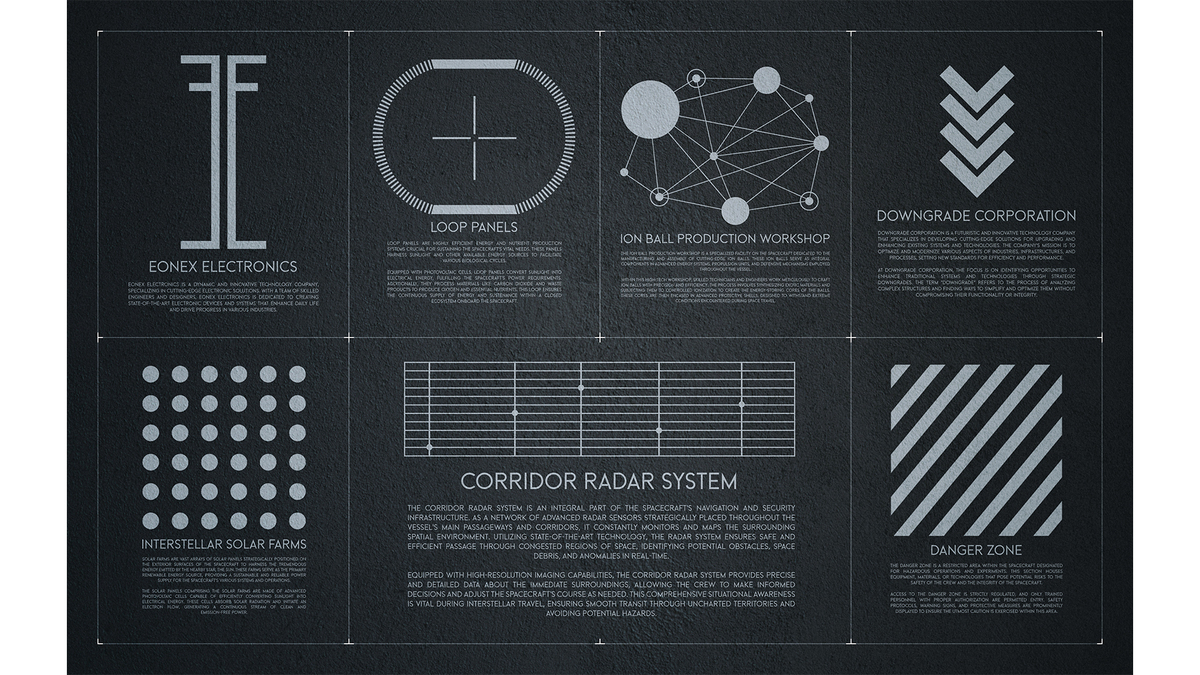Service Hours: Always Open

Cutting-edge electronics are transforming our daily lives. They boost both safety and performance.
In today’s fast-paced world, technology plays a crucial role in enhancing our safety and efficiency. From smart home devices to advanced automotive systems, electronics are at the forefront of these improvements. These innovative systems are designed to provide better protection and elevate performance standards in various fields.
As we dive into the world of cutting-edge electronics, we will explore how these advancements are making a significant impact. Whether it’s through improved communication, smarter navigation, or increased automation, these technologies aim to create safer and more efficient environments for everyone. Get ready to discover how these systems are shaping our future.
Introduction To Cutting-edge Electronics
In today’s fast-paced world, electronics continue to evolve at an impressive rate. Cutting-edge electronics are leading this charge, offering new and exciting ways to enhance safety and performance across various sectors. From home devices to industrial machinery, these advanced systems are changing the way we interact with technology.

Read More: A12 Super Car: Unleashing Ultimate Performance and Luxury
Advancements In Technology
Modern electronics are integrating AI and IoT to create smarter devices. These technologies allow for real-time data collection and analysis, leading to better decision-making processes. For instance:
- Smart home systems can monitor energy usage and optimize it.
- Wearable devices track health metrics and alert users of potential issues.
- Automated industrial systems improve efficiency and reduce human error.
Additionally, advancements in sensor technology enable more accurate measurements and faster responses. This ensures that devices can adapt and react to changing conditions seamlessly.
Impact On Safety And Performance
Cutting-edge electronics play a crucial role in enhancing safety. For instance, automotive safety systems now feature:
- Automatic emergency braking to prevent collisions.
- Lane departure warnings to keep drivers on track.
- Adaptive cruise control for maintaining safe distances.
In the healthcare sector, advanced monitoring systems keep patients safe by providing real-time updates to doctors. This allows for timely interventions and better patient outcomes.
Performance improvements are equally significant. High-efficiency processors and enhanced connectivity lead to faster and more reliable devices. This results in smoother user experiences and greater productivity.
| Sector | Safety Enhancement | Performance Boost |
|---|---|---|
| Automotive | Automatic emergency braking | Enhanced fuel efficiency |
| Healthcare | Real-time patient monitoring | Quick diagnostics |
| Industrial | Risk detection systems | Automated processes |

Innovations In Safety Systems
In the world of cutting-edge electronics, safety systems are evolving rapidly. These advancements not only enhance protection but also boost overall performance. This section delves into the latest innovations in safety systems, focusing on smart sensors and real-time monitoring.
Smart Sensors
Smart sensors are at the forefront of modern safety systems. They detect and respond to environmental changes, providing critical data for safety measures.
Here are some key features of smart sensors:
- Precision: Smart sensors offer high accuracy in detecting potential hazards.
- Integration: They easily integrate with existing systems, improving functionality.
- Automation: These sensors automate responses, reducing human error.
Smart sensors come in various types, including:
| Type | Function |
|---|---|
| Temperature Sensors | Monitor heat levels to prevent overheating. |
| Motion Sensors | Detect movement to avoid collisions. |
| Gas Sensors | Identify harmful gases to prevent exposure. |

Real-time Monitoring
Real-time monitoring systems provide continuous oversight of safety conditions. They ensure immediate detection and response to potential threats.
Benefits of real-time monitoring include:
- Instant Alerts: Immediate notifications of any irregularities.
- Data Collection: Continuous data gathering for analysis and improvements.
- Enhanced Decision-Making: Real-time data supports better decision-making.
Industries utilizing real-time monitoring systems include:
- Manufacturing
- Healthcare
- Transportation
With these advancements, safety systems are becoming more efficient and reliable. Smart sensors and real-time monitoring are crucial components in this evolution.
Enhancing Performance Systems
Enhancing performance systems in cutting-edge electronics is pivotal. These systems drive higher efficiency, faster processing, and better user experiences. They blend technological advancements with innovative solutions to meet the growing demands of modern users. Let’s delve into the specifics.
High-speed Processing
High-speed processing is crucial for modern electronics. Faster processors mean quicker data handling and seamless multitasking. This is vital for applications in gaming, virtual reality, and advanced computing. High-speed processors reduce lag and improve user satisfaction. They also support complex functionalities effortlessly. As technology evolves, processors continue to shrink in size. Yet, they grow in power, offering unparalleled performance.
Efficiency Improvements
Efficiency improvements are vital for cutting-edge electronics. They ensure devices use energy wisely and extend battery life. This is essential for mobile devices, where power conservation is key. Efficient systems also contribute to sustainable technology practices. They help reduce the carbon footprint of electronic devices. Enhancing efficiency involves optimizing software and hardware. It leads to better performance and longer device lifespan. Continual advancements in this area promise even greater benefits.
Role Of Ai And Machine Learning
In the world of electronics, Artificial Intelligence (AI) and Machine Learning (ML) are playing a vital role. These technologies are making systems more intelligent and efficient. They enhance both safety and performance. Let’s explore how.
Predictive Maintenance
AI and ML are used for predictive maintenance in electronic systems. This means predicting when a machine will fail. AI analyzes data from sensors and past failures. It helps in scheduling maintenance before a breakdown occurs.
| Benefits | Explanation |
|---|---|
| Reduced Downtime | Machines are serviced before failure, reducing stoppages. |
| Cost Savings | Preventive measures save money on major repairs. |
Automated Decision-making
AI and ML aid in automated decision-making. This means systems can make decisions without human input. For example, a self-driving car can decide to stop when it sees an obstacle. These decisions are based on data and predefined rules.
Here are some key points:
- Improved Safety: Quick decisions can prevent accidents.
- Efficiency: Systems operate faster without human delay.
AI and ML transform electronic systems. They make them smarter and more reliable. As technology advances, their impact will grow.
Internet Of Things (iot) Integration
The Internet of Things (IoT) integration is transforming the world of electronics. It connects everyday devices to the internet. This connection enhances safety and boosts performance. IoT integration makes devices smarter and more efficient.
Connected Devices
Connected devices are the backbone of IoT. They communicate with each other over the internet. These devices include home appliances, cars, and industrial machines. They use sensors and software to share data. This connection creates a network of smart devices. It improves safety and performance by automating tasks.
Data Collection And Analysis
IoT devices collect massive amounts of data. They monitor temperature, speed, and other variables. This data helps improve systems. It identifies patterns and predicts problems. Data analysis provides insights for better decision-making. It enhances safety by detecting issues early.
IoT integration is vital for modern electronics. It connects devices and analyzes data, improving safety and performance in many areas.

Credit: www.nexair.com
Wireless Technologies
Wireless technologies are at the heart of modern electronics. They bring new levels of safety and performance. These technologies remove the need for wires. This helps in making devices more flexible and easier to use.
5g Networks
5G networks are changing how we connect. They offer faster speeds and lower latency. This means more reliable connections and better performance.
Consider the benefits of 5G:
- Faster downloads and uploads
- More stable connections
- Support for more devices
5G is not just for phones. It helps in many areas. For example, it improves communication in smart cities. It also supports advanced healthcare systems. Emergency services can respond faster with 5G.
Remote Control And Access
Wireless technology allows for remote control and access. This is important for many systems. It means you can control devices without being near them. This increases safety and convenience.
Examples of remote control and access include:
- Smart home systems
- Remote monitoring of industrial machines
- Access control in security systems
Imagine controlling your house lights from your phone. Or monitoring your factory from another city. These are possible with wireless technologies.
Wireless technology is changing how we interact with devices. It makes systems more efficient and reliable.
Challenges And Solutions
As technology advances, cutting-edge electronics are becoming crucial for enhancing safety and performance. However, integrating these systems is not without its challenges. Addressing these issues is vital to ensure the technology’s effectiveness and reliability.
Security Concerns
One of the primary challenges in modern electronics is ensuring security. As devices become more connected, they are also more vulnerable to cyber-attacks. These attacks can compromise sensitive data and disrupt systems.
To mitigate these risks, manufacturers are implementing robust encryption methods. They are also conducting regular security audits to identify and fix vulnerabilities. Below is a table outlining common security measures:
| Security Measure | Description |
|---|---|
| Encryption | Converts data into a secure format |
| Firewalls | Blocks unauthorized access |
| Security Audits | Regular checks for vulnerabilities |
Overcoming Technical Barriers
Another challenge is overcoming technical barriers. These barriers include hardware limitations and software integration issues. Addressing these challenges is essential for the seamless operation of electronic systems.
Manufacturers are focusing on research and development to create more efficient hardware. They are also working on improving software compatibility. Here are some solutions to common technical barriers:
- Upgrading hardware components for better performance
- Developing software with better compatibility
- Conducting thorough testing before deployment
By addressing these challenges, cutting-edge electronics can significantly enhance safety and performance. Continuous improvement and innovation are key to overcoming these obstacles.
Future Trends And Developments
Technology keeps evolving. In the realm of cutting-edge electronics, new advancements are emerging that enhance safety and performance. These trends offer exciting prospects for various industries. Let’s delve into some of the future trends and developments.
Emerging Technologies
New technologies are set to reshape the electronics landscape. Here are some noteworthy examples:
- Artificial Intelligence (AI): AI is improving smart devices. It helps in predicting and preventing failures.
- Internet of Things (IoT): IoT connects devices. It provides real-time data and enhances efficiency.
- 5G Connectivity: 5G offers faster communication. It supports advanced applications in various sectors.
- Wearable Tech: Wearables track health and fitness. They also monitor safety parameters.
These technologies are not just innovative. They are also practical. They improve both performance and safety.
Potential Impact On Industries
The impact of these technologies is vast. Different industries will benefit in unique ways.
| Industry | Impact |
|---|---|
| Healthcare | Wearables monitor health. IoT devices provide real-time patient data. |
| Automotive | AI and IoT enhance vehicle safety. 5G supports autonomous driving. |
| Manufacturing | IoT enhances production efficiency. AI predicts maintenance needs. |
| Consumer Electronics | Wearables and smart devices improve user experience. AI offers personalized services. |
Each industry stands to gain immensely. These technologies promise to improve safety and performance.

Credit: blendermarket.com
Frequently Asked Questions
What Are Cutting-edge Electronics?
Cutting-edge electronics are advanced technology systems. They enhance safety and performance in various applications. They include innovative devices and components.
How Do Electronics Improve Safety?
Electronics improve safety by monitoring conditions. They provide real-time alerts and automate responses. This reduces the risk of human error.
What Are Examples Of Advanced Electronic Systems?
Examples include smart sensors, automated controls, and AI-based monitoring systems. They improve efficiency and reliability.
How Do Electronics Enhance Performance?
Electronics enhance performance by optimizing operations. They provide precise control and data analysis. This leads to better decision-making.
Conclusion
These advanced electronics improve both safety and performance. They bring peace of mind. Enhanced systems mean fewer accidents and smoother operations. Technology keeps evolving, ensuring safer and more efficient experiences. Stay updated with these advancements. Embrace the benefits they offer.
Cutting-edge electronics are essential for modern safety and performance needs. They keep us safe, productive, and efficient. Stay informed, stay safe, and enjoy the performance boost.
